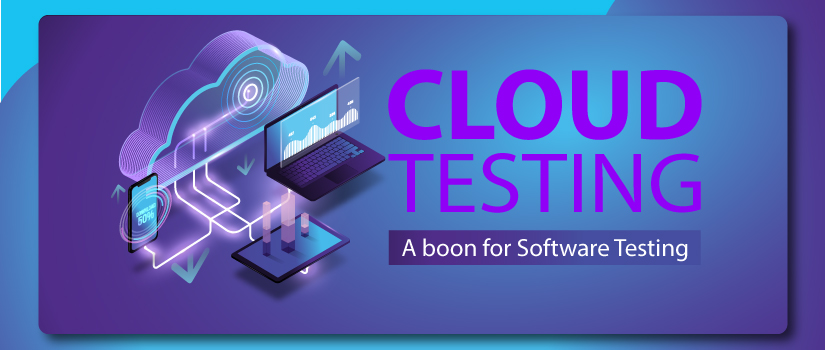Why do you need a cloud testing tool in software testing?
With the appearance of virtualization, the philosophy of sharing computing assets over numerous working operating systems, with the end goal to expand adaptability, decrease capital expenses, and empower simple organization of the IT foundation, it turned into the foundation of many enterprises.
Testing in the cloud carries with it advantages of simple accessibility, high versatility, and minimal effort.
It takes into account web and mobile testing in various conditions and numerous machines without building your very own foundation.
Obviously, the rising prominence of cloud testing has offered to ascend to a huge number of cloud-based testing instruments in the market.
Here is a list of the top 11 gigantically famous cloud testing tools.

1. SOASTA CloudTest
SOASTA CloudTest is an excellent cloud-based testing tool, which offers a variety of functionalities such as web performance and functional testing and mobile performance and functional testing.
How a website or a mobile phone behaves under huge loads is basically an indicator of its performance.
With seamless integration and real-time analytics, this cloud-based software testing tool maintains the number one position in our list.
If you don’t want all the functionalities in your testing tool then you can try CloudTest Lite, which is basically the lighter version of the complete software.
2. LoadStorm
It’s a highly used cloud-based software testing tool, which is used to test various mobile and web applications.
LoadStorm is a cost-effective testing tool, which can be used to simulate various testing scenarios. It all depends upon usage or traffic, in the sense that if your website or mobile app is designed for high usage and traffic then you should definitely check out this tool.
Virtual users – that’s what it can simulate so that you can do real-time load testing. It’s a highly customizable app so that you can prepare multiple test cases.
3. BlazeMeter
A cloud-based software testing tool must be able to enable end to end performance so that complete test cycle is executed.
BlazeMeter is quite capable in the sense that it can simulate a large number of test cases. As we said that this cloud based software testing tool can simulate a large number of test cases.
To be precise, 1 million users can be simulated with this testing tool. Real time reporting is enabled by default in this testing tool so that you get authentic real time data.
4. Nessus
This cloud testing tools can be used to detect misconfigurations, vulnerabilities and missing patches.
Also Read: Cloud Testing: A boon For Software Testing
It can also be used to detect malware, viruses, backdoors so as you can see, it’s quite comprehensive in feature set and functionalities.
This cloud testing tools is a boon for banking and healthcare industries as it can generate audit report as well. This tool is one of the most widely used testing tool and its use is just not limited to healthcare and banking but other industries use it as well.
Nessus can generate scan reports also.
5. App Thwack
App Thwack can test iOS, Android and web apps with utmost accuracy and precision.
Calabash, Robotium, UI Automation – these are some of the automation platforms with which this cloud testing tool is compatible.

It’s no doubt one of the best available cloud testing tool. REST API can be used if you are willing to test your product from any other client.
6. Jenkins Dev@Cloud
It allows for continuous deployment; development and integration so that you don’t have to worry about the nitty gritty of cloud testing tools.
Deployment is easy if not time-consuming if you use this testing tool.
Jenkins Dev@Cloud provides a large number of mobile tools as well so that you can test your product with utmost ease.
- Xamarin test cloud
It’s basically a UI acceptance testing tool, which is widely used on mobile devices. It uses NUnit testing library so that the test results are accurate and precise.
The tool is capable enough to test thousand physical devices at a time and shows accurate results as well.
8. TestLink
In any testing procedure, the main thing that needs to be kept in mind is software quality assurance.
If your testing tool is able to provide you excellent software quality assurance then it’s the best thing that can happen to your product.
Test plans, test cases, user management, etc – these are broadly the kind of testing services provided by this cloud based testing tool.
9. Test collab
Out of all the web-based software testing tools, this one is quite unique in the sense that it quite features rich.
The best part with this testing tool is that it uses macros. This tool uses a single window system so that it’s easier for users to create test cases.
Test Collab underpins agile philosophies, Test automation, Integration with issue chiefs, bi-directional if there should be an occurrence of JIRA and Redmine.
10. Watir
It’s an open source cloud-based testing tool and is quite powerful as well. It consists of Ruby libraries, which makes it all the more user-friendly and powerful. The best part with this tool is that it’s totally free, so you don’t have to spend anything to use it.
Watir 6.15 is presently accessible on RubyGems. A couple of new component techniques, new donors, and some minor execution upgrades. The proportional usefulness in Python has likewise been discharged in Nerodia 0.12.
11. Tenable
Fragmented approach towards vulnerability management ca n be abolished. Teneable delivers real-time visibility into AWS excposures.
The tools also helps you in managing risk through a cloud platform
Final verdict
These cloud testing tools are exceptionally prominent as they are cost effective and you don’t require a staggering expense framework to continue these tools.

Today, Cloud Computing has turned out to be one of those “enormous blasts” in the business.
Most associations are presently inclining towards embracing the cloud on account of its adaptability, versatility and diminished expenses.



